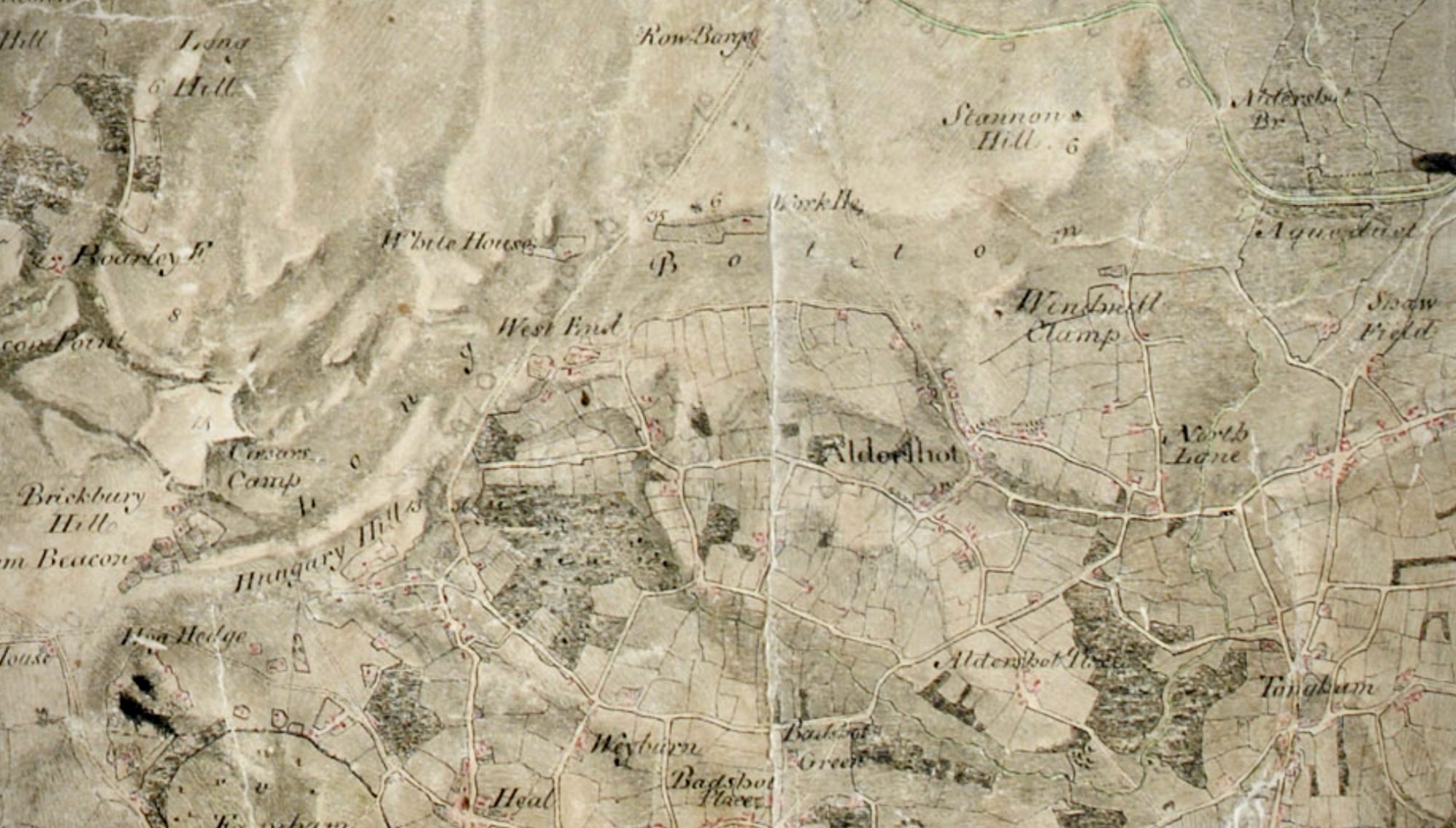I first started wondering what Aldershot was like as a village very many years ago when sat on the top deck of a school bus. I was then travelling as one of the new boys from Aldershot attending Sixth Form at Farnborough Grammar. The route ran along Queen’s Avenue through North and South Camp, across what had once been open heath. When not waving at girls from Farnborough and Cove traveling in the opposite direction on busses carrying them to the County High, I started to pose questions about Aldershot before the Army came. Having developed some skills and then gifted some time, I returned to research some of those questions.
Village Imaginarium
The term ‘Imaginarium’ is now used to conjure up what is usually experienced in historical novels and cinema. Although this is neither of those, I’ve tried to retain some sense of wonder I had about what the village and villagers were like. In what could be regarded as an ‘inside-out’ history, I sometime invite the pretence of the viewpoint of the lived experience of particular villagers. Reading novels, biographies and newspapers of the time has helped that. The search is still on for contemporary diaries or letters, noting of course limitations of literacy skews whose viewpoints are then available. Notwithstanding that ambition, what is written in this history is not fiction. The names and characteristics of the people described in this history of the village are real. Who they were and what they did is based on analysis of data extracted from a variety of official sources, such as parish registers, property tax returns and entries in census enumeration books. More than that is for the reader to judge.
My Family
I have no direct family connection with those who lived in the village before the Army arrived. My connection, however, extends back almost as far, to 1858, shortly after the Camp at Aldershot was fully established. A butcher and a baker were amongst the early arrivals from London. The baker married the butcher’s daughter at the newly-built Wesleyan Church. Just over thirty years later, their daughter wed at the parish church to a Seaforth Highlander. Having experienced active service with the regiment he was made an Instructor based at the Gym on Queen’s Avenue, the route along which I travelled on my school bus. These were my grandparents. Their children, a product of military and town, would later work in and around the garrison town, in the Field Stores, the NAAFI and Gale & Polden, the military publisher. Before I came along my mother also married a soldier in the medical corps. He was based at the Cambridge Military Hospital which is set back less than half a mile from Queen’s Avenue.
The Research
My interest to know more was encouraged at various times by my mother’s sister who had worked at Gale & Polden Ltd. She had assisted in the research and production of the standard reference for Aldershot’s history as a garrison town.[1] Thus far, I have not come across an equivalent of that for Aldershot’s earlier pre-Army history. I harbour a long-run ambition that this website will also be used by others and prompt the writing of such a reference work.
The research for this study was begun while I was still employed part-time at a university, having stepped aside from a leadership post I had held for over twenty years. It was in some a sense an opportunity to be a researcher once more, as I had at first been, although in a very different subject area.
My initial plan was to carrying out a modest ‘Before/After’ study. The data source was to be the enumeration books for the two censuses which straddle the opening of the Camp in 1855, namely the 1851 and 1861 Censuses of Population. The limited objective then was to summarise changes in demographic and occupational structure. I encountered the challenge that some of the pages of the enumeration books for the 1861 Census are missing.
Fortunately, I have also had opportunity to consult with local historians whose main interests were the beginnings and development of Aldershot as a garrison town. Then, by way of diversion, I came across a very varied and rich set of alternative source materials. I stumbled into a history which spanned centuries, back to a time when the Hundred of Crondall, of which Aldershot was a tithing, was owned by the royal house of Wessex. Manuscript documents, discovered in a strongbox in 1857 and later transcribed, covered the intervening centuries. Taken together these offer explanation for much of the complex structure of land holdings and power which prevailed in the mid-1850s when the Army took an interest in Aldershot.
I found myself confronted by the daunting prospect of having to attempt a history of a thousand years, beginning in circa 850 AD. I needed to find a way drastically to reduce that ambition. With a change of plan, I decided to write a history which had its focus located firmly upon a more limited period of the place, eventually settling on twelve months of a single year, 1853.
What Next
The following is recommended as the order of points of entry into this history: => Introduction => The Village => January 1853.
[1] The Story of Aldershot: a history and guide to town and camp (1951) Howard N. Cole, Gale & Polden, Aldershot. Updated & Enlarged in The Story of Aldershot a History of the Civil and Military Towns (1980) Howard N. Cole, Southern, Aldershot. Start search here.
